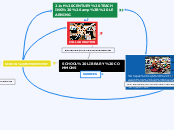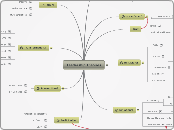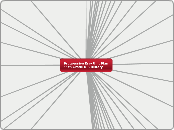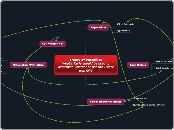Photo by rawpixel.com is licensed under CC
Photo by Christina Morillo is licensed under CC
Photo by Pixabay is licensed under CC by 0
SOURCES
Ontario Ministry of Education. “Learning For All: A Guide to Effective Assessment and Instruction for All Students, Kindergarten to Grade 12.” Queen's Printer for Ontario, 2013. http://edu.gov.on.ca/eng/general/elemsec/speced/LearningforAll2013.pdf
Ontario Ministry of Education. “School Effectiveness Framework: A Support for School Improvement and Student Success K-12 .” Queen's Printer for Ontario, 2013. http://www.edu.gov.on.ca/eng/literacynumeracy/SEF2013.pdf
Spina, Carli. “How Universal Design Will Make Your Library More Inclusive.” School Library Journal, 5 May 2017, www.slj.com/?detailStory=how-universal-design-will-make-your-library-more-inclusive.
“Together for Learning School Libraries and the Emergence of the Learning Commons.” Ontario Library Association, 2010. https://www.accessola.org/web/Documents/OLA/Divisions/OSLA/TogetherforLearning.pdf
VideoCoursesForTeachers, QEP. “Carol Tomlinson on Differentiation: Responsive Teaching.” YouTube, YouTube, 5 Oct. 2011, www.youtube.com/watch?time_continue=234&v=01798frimeQ.
21st CENTURY TEACHING & LEARNING
Looking back on my response for Module 1 with regards to 21st Century Learning, I wrote "to better prepare our students for a world that is rapidly changing in the way we learn, communicate, receive, interpret and interact with technology (and one another) our library learning commons need to reflect these changes and be at the helm of helping to facilitate teachers and students to come along for the ride".
I see 21st Century Teaching and Learning in combination with Fullan's 6Cs as a road map, to be the overarching driving force behind the LLC and its role in the school.
Ultimately we want to prepare our students to be critically aware and able to participate in our rapidly changing and technologically driven world.
TLs will help support the school in preparing our students for this in the creation of an accessible and welcoming space to explore and learn, by providing the leadership and guidance to access and use virtual spaces, and in collaborating together to build supportive learning communities.
SCHOOL LIBRARY COMMONS
SCHOOL IMPROVEMENT
From Component Two of the Ontario Ministry of Education's School Effectiveness Framework document the following indicators relate directly to my understanding of the collaborative and leadership role of the TL and LLC to support the school and staff in co-planning, supporting pedagogical learning and assessment practices (including integrative use of technology), inquiry, and inclusivity. A successful LLC (with the leadership of school administration and TL working in collaboration with teaching colleagues) will help to bring success to these indicators.
Indicator 2.1 Collaborative instructional leadership builds capacity to strengthen and enhance teaching and learning.
❖ Collaborative planning, design of common assessments and unit plans, use of resources and culminating activities occurs within and across grade levels and courses of study.
❖ A collaborative learning culture (e.g., a commitment to continuous improvement, a collective focus on student learning for all, deprivatization of practice and reflective dialogue) is evident.
❖ Parents are engaged through ongoing communication and dialogue to support a positive learning environment at home and at school.
(Ontario Ministry of Education, School Effectiveness Framework 16)
Indicator 2.2 Processes and practices are designed to deepen understanding of the curriculum and refine instruction to improve student learning and achievement.
❖ The learning environment supports professional dialogue about the big ideas and content in the curriculum and how to implement instructional practices that lead students to deep conceptual understanding.
❖ Access to expertise and professional learning resources is provided in response to the range of student needs.
❖ System resources are accessed to support professional learning
(Ontario Ministry of Education, School Effectiveness Framework 18)
Indicator 2.4 Job-embedded and inquiry-based professional learning builds capacity, informs instructional practice and contributes to a culture of learning.
❖ Professional learning is inquiry-based and responsive to student assessment data.
❖ School leaders are engaged in professional learning with staff. ❖ Conditions (e.g. time to meet and talk, common planning time) that promote collaborative learning cultures are established.
❖ School leaders regularly visit all classrooms to engage in ongoing inquiry regarding effective instructional practices and how to increase their impact on student learning.
❖ School leaders seek out relevant professional learning and resources (e.g., curriculum and resource documents, webcasts, monographs, podcasts, ministry websites, institutes, conferences, etc.) to support educators.
(Ontario Ministry of Education, School Effectiveness Framework 19)
Indicator 2.5 Staff, students, parents and school community promote and sustain student well-being and positive student behaviour in a safe, accepting, inclusive and healthy learning environment
❖ A whole school approach is used to engage all members of the school community in developing policies and engaging in practices that will build and sustain a safe and accepting learning environment.
❖ Safe and Accepting Schools Teams develop and update strategies to maintain and improve the school climate
❖ The tenets of equity and diversity are embedded in the school culture.
(Ontario Ministry of Education, School Effectiveness Framework 20)
Community
The LLC can help to develop a community of collaborative teachers that work together to share and support one another.
The LLC can help to create a community of collaborative learners that feel welcomed and accepted to explore and try new things.
These communities will also include the inclusion of parents, local, and global community members in using and sharing the LLC space, but also in communication of learning through apps, blogs, vlogs, school and library websites etc.
Literacy
As a school-wide focus to increase literacy the library could work at the centre of helping to establish a love for reading.
-book clubs
-electronic book lists
-Forest of Reading program
-Books with Buzz (quick book talks for newly displayed books, with opportunities for students to win prizes by writing a short and sweet review)
-manga club
-regular book exchanges
-developing and encourage the practice daily independent reading
-regular book talks and events
Improvements with regards to multiple literacies through the modeling, teaching regular use and critical examination of:
-media literacy
-digital literacy
-visual literacy
COLLABORATION
The Library Learning Commons is the hub of the school and at the heart of the LLCs is the notion of collaboration.
TEACHER LIBRARIAN:
The TL's role is to connect, share, and support colleagues in the pedagogical practice and integrative use of technology, design thinking, inquiry based learning, and in modeling and promoting exploratory, creative, critical, inclusionary ways of learning, questioning, and thinking.
STUDENTS:
At the same time TLs will also teach, model, and provide the means in which students will learn to collaboratively work together (physically and virtually) within the classroom, school, and larger community.
UNIVERSAL DESIGN
"Universal Design refers to the idea of designing spaces, products, services, and more in a way that makes them as functional as possible for people of all ages, abilities, and backgrounds". (Spina)
Seven Principles of Universal Design:
1. Equitable Use
2. Flexibility in Use
3. Simple and Intuitive Use
4. Perceptible Information
5. Tolerance for Error
6. Low Physical Effort
7. Size and Space for Approach and Use
(Spina)
Universal Design:
- can be applied in the development and organization of physical spaces, and in how virtual spaces spaces are developed and accessed
- should be considered in the early planning stages of the physical development and construction of the Library Learning Commons (Spina).
- includes flexibility and consideration in incorporating into planning the unique ways in which we move, interact, think, learn, and demonstrate learning
Differentiated Instruction
According to the Ontario Ministry of Education's document Learning For All, differentiated instruction takes into consideration that our strengths, interests, learning styles and willingness to learn are different, and that they need to be taken into consideration when planning our instruction.
You can differentiate the following:
• the content of learning (what students are going to learn, and when);
• the process of learning (the types of tasks and activities);
• the products of learning (the ways in which students demonstrate learning);
• the affect/environment of learning
(Ontario Ministry of Education, Learning For All 17)
I agree with education leader and expert Ann Tomlinson, when she says teaching is a responsive action; we need to quit just teaching content, and be aware that we teach individuals, we teach so that their learning becomes part of their lives, and we make sure that the way we are teaching works for them (Video Courses for Teachers).
Design Thinking
"Design thinking is a human-centred process that begins by understanding the needs and motivation of students, parents, and educators. It nurtures creativity, collaboration, empathy, and divergent thinking skills appropriate for twenty-first-century learning and teaching" (Ontario Ministry of Education 14).
Design thinking can foster the development of new creative ways of thinking and teaching that integrates the use of technology and 21st century teaching and learning.
Physical Space
Universal Design is one design that works for everyone (Spina).
This would include:
-ramps and doors that allow for ease of entry and exit
-movable furniture to accommodate small/large groups, to work together independently or in groups
-furniture and spaces that supports BYOD
-spaces that can invite shared usage for makerspaces, presentations, and access to multimedia screens and technology
-access to resources both physical and digital
-resources and visuals (images, displays, signage) that are inclusive and reflect diverse stories and populations
When planning a LLC there will be many stakeholders from admin, the school board, students, parents, and staff that will be able to provide input and feedback on their needs that can help shape the unique features of the school's. Here are a few strategies ad things to consider together:
-conduct a school wide surveys, or with visits to the library with students and staff posting sticky note suggestions and wishes in the actual physical space
-visit other successful LLC spaces and see what works for them and what doesn't and why
-consult with designers as there are many restrictions and regulations that will need to be followed
-Keep in mind the limitations of the actual physical space and budget constraints in the planning phase
-perhaps the shift and changes will occur over a long time, so prioritize needs according to importance and realistic do-ability
Virtual Space
Virtual Spaces extends learning to be accessible outside the physical and traditional classroom setting. It allows for greater flexibility as students are able to access tools, supports, and materials that is not restricted to a particular time and place.
Universal Design of Virtual Spaces would include the following:
- integration of social media and cell phone use to gather student responses, information, read articles, reviews, books, explore maps, take videos and photos (Together for Learning School Libraries and the Emergence of the Learning Commons 12)
- use collaborative virtual spaces for projects
- Use bookmarking web technology (e.g., Diigo, Del.icio.us, Shelfari) for building reading lists with students; encourage them to add to the list
- Explore Web 2.0 applications for their potential to engage learners (e.g., Wordle, YouTube, Audacity, Facebook)
- Match Web 2.0 applications with student needs (e.g., create collaborative virtual learning centres using wikis, Ning, Google Apps to allow 24 hour access)
- Use tools such as interactive white boards and document cameras to tap into visual learning
- Explore gaming (MMORPGs, simulations, board games) as a way of learning
- Share successes and challenges with other professionals through
- Professional Learning Communities and Personal Learning Networks
(Together for Learning School Libraries and the Emergence of the Learning Commons 12)
- Access to digital content and information such as databases, virtual communication to greater global community (Skype, chats, discussions etc.), websites, videos, blogs, pathfinders, graphic organizers, audio and eBooks
We need to also consider teaching students the skills to be successful participants of virtual and digital spaces, with regards to:
-digital etiquette
-privacy and safety (in using various technological tools)
-critical thinking around authenticity, and awareness of bias (their own and others)









